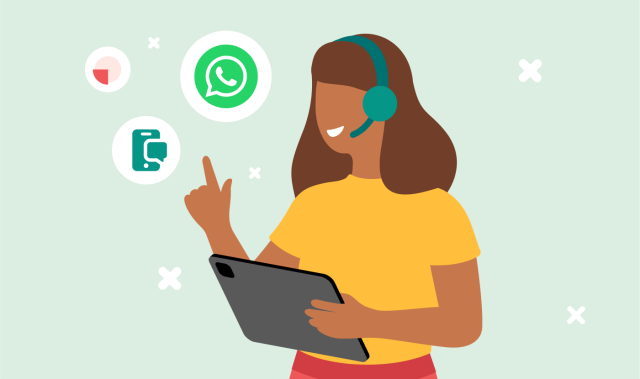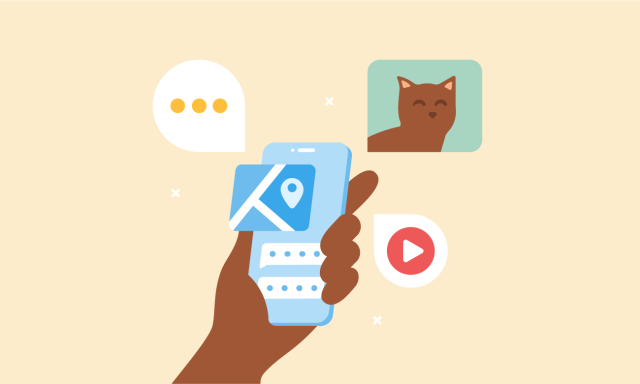In this article:
- Why should you be using WhatsApp for marketing?
- Benefits of WhatsApp marketing
- WhatsApp features that make it perfect for marketing
- 7 easy steps to create a WhatsApp marketing strategy
- Businesses that are doing WhatsApp marketing right
- Integrating WhatsApp into your omnichannel strategy for better customer experience
- Learn more about using WhatsApp for marketing
With billions of active users and billions of messages sent per day, WhatsApp is a marketers’ dream: A messaging channel that businesses can use for real-time conversations with their audience, share updates, and create a genuine connection.
Looking for tips to maximize your WhatsApp marketing efforts? This guide will get you ready to harness the full power of WhatsApp to help you communicate effectively and engage your customers on the world’s most popular messaging channel.
Why should you be using WhatsApp for marketing?
WhatsApp isn’t just a messaging app – it's a way for brands to establish direct, meaningful connections with their audience. WhatsApp offers brands a way to reach people on a channel that they already spend a lot of time on (over 17 hours each month by some estimates!).
But rather than use standard WhatsApp, which is for personal, person-to-person communication, businesses use solutions like WhatsApp Business (ideal for small business use) and WhatsApp Business API (geared for larger businesses). These tools provide robust features like business profiles, multimedia sharing capabilities, and two-way conversational design for businesses to enhance their marketing programs.
Benefits of WhatsApp marketing
If your customers are already using WhatsApp (and they probably are!), you should be using it to have conversations with them. Here are a few core benefits of using WhatsApp for marketing.
Direct, personal communication
WhatsApp is one of the most popular messaging channels around the world, so businesses can connect with their audience in a space they already feel comfortable with. Because conversations on WhatsApp are one-to-one, they’re inherently personal, immediate, and direct. Marketers can tap into an environment to foster genuine, individual connections with users.
High engagement rates
WhatsApp marketing is about more than just sending and delivering messages; it’s about having genuine conversations. And with an impressive average open rate of 98%, WhatsApp messages are primed for direct engagement.
Keep this in mind: This high open rate reflects the willingness of subscribers to actively participate in ongoing dialogue. That’s why it’s important to keep your messages relevant and personalized to each person’s interests and preferences!
Global reach
WhatsApp has more than two billion monthly active users and is the preferred messaging app in many countries.
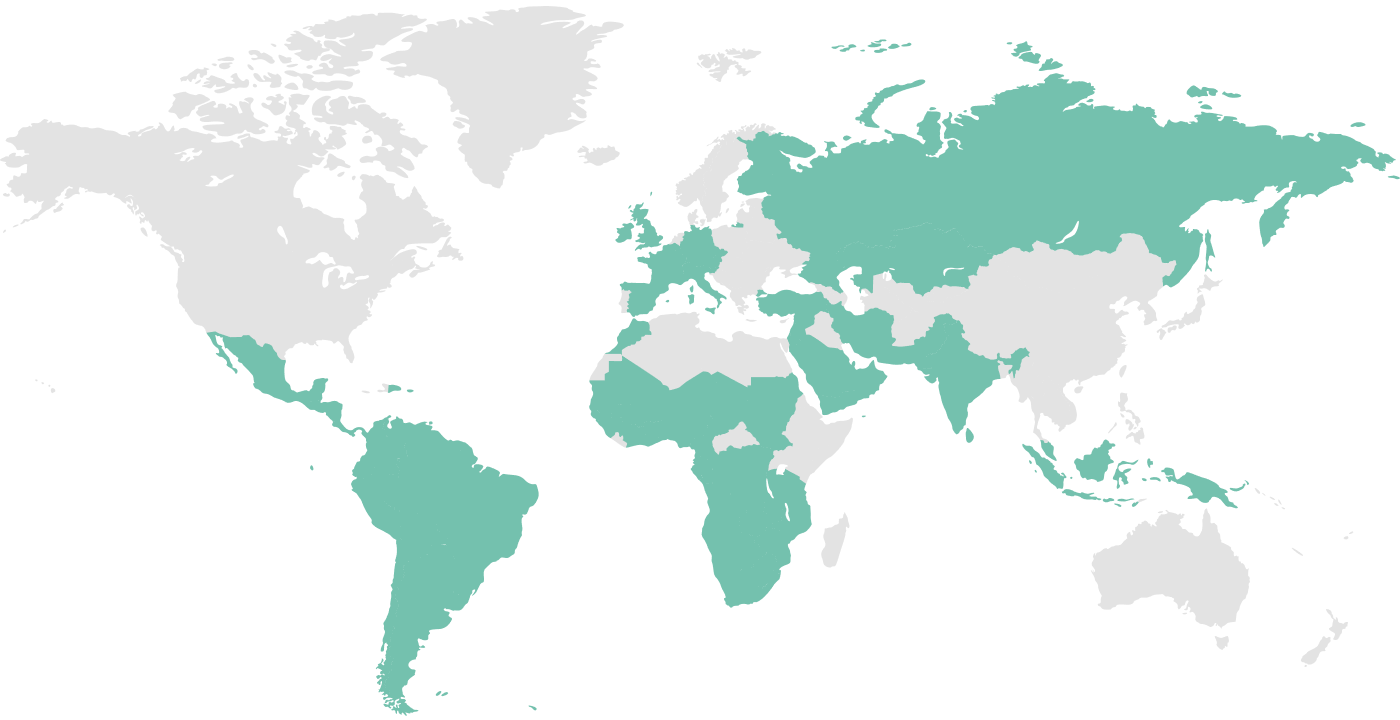
Countries highlighted in green represent where WhatsApp is the most popular messaging app.
Despite its already massive reach, WhatsApp’s popularity continues to rise in use in countries like the United States, Mexico, India, and Brazil each year. But it’s not just individuals adopting WhatsApp at a quick pace – an increasing number of businesses are turning to WhatsApp marketing to captivate users and meet revenue goals. For example, businesses using WhatsApp marketing in India report impressive outcomes, like increased lead generation and stronger customer engagement.
WhatsApp features that make it perfect for marketing
From its widespread user base to its multimedia features, WhatsApp can help elevate your marketing ventures from ordinary to exceptional.
WhatsApp can help you promote new products, engage potential customers, or foster long-term customer retention. Here are a few key features that make it an excellent choice for elevating your marketing!
Business profiles
A WhatsApp business profile establishes your professional presence on WhatsApp and includes essential information for your subscribers to know, like your business’:
-
Name
-
Description
-
Address
-
Business hours
-
Category
Regardless of whether you’re using WhatsApp Business App or WhatsApp Business API, you’ll need a verified business profile as well. This ensures that businesses using WhatsApp are legitimate and helps you build confidence among your audience to signify they’re engaging with a trustworthy, authentic brand.
Interactive capabilities
WhatsApp is interactive by nature, with features like two-way messaging and multimedia sharing for more meaningful conversations.
WhatsApp Business App offers minimal marketing possibilities, lacking features like automation, targeting, personalization, or tracking. As a result, many companies end up switching to the more comprehensive WhatsApp Business API solution.
Here are a few interactive capabilities of WhatsApp's business solutions, and whether these features are available in the API or in the free app.
|
|
WhatsApp Business API |
WhatsApp Business App |
|
Multimedia messaging (audio, stickers, images, documents, etc.) |
✓ |
✓ |
|
Two-way messaging capabilities with subscribers |
✓
|
✓
|
|
Basic analytics like number of messages sent/received |
✓ |
✓
|
|
One-to-one conversations at scale |
✓
|
x
|
|
WhatsApp Business templates and components (like quick reply buttons, URL buttons, OTP buttons, and more) |
✓ |
x |
|
Interactive messages like single- or multi-product catalogues, list messages, and location request messages |
✓ |
x |
|
Advanced analytics like ratings and customer feedback |
✓
|
x
|
|
x |
✓ |
|
|
Offered at no cost |
x |
✓ |
Analytics and reporting
Businesses that use WhatsApp marketing messages have access to detailed analytics and performance insights in a customizable dashboard that they can use to make marketing campaigns even better. A few of these analytics include:
-
Amount spent
-
Messages sent
-
Messages delivered
-
Cost per read
-
Click-through-rate
-
Conversions
-
Conversion value
-
ROI
-
...and more!
And WhatsApp works with popular marketing tools and CRMs so you can get the exact data you need, when you need it.
7 easy steps to create a WhatsApp marketing strategy
A well-planned marketing strategy is key to truly making an impact. Here is your seven-step plan to create a WhatsApp marketing strategy that engages and converts!
1. Set up a WhatsApp Business Account
If you’re a small business, you’ll need a WhatsApp Business Account (WABA) to get started. First, download the WhatsApp Business App. After you’ve downloaded the app, you’ll be asked to agree to the terms of service, verifying your business phone number, and then completing your Business Profile.
If you’re a larger enterprise, check out Meta’s instructions for getting started with a Business Account and a WhatsApp Business Platform (API) account.
Business Solution Providers (BSPs) like Sinch can help set up a WABA, WhatsApp phone number, and templates on your behalf. Check out our step-by-step guide to WhatsApp messaging to learn more.
Regardless of what solution you’re using, you’ll also need to verify your business to unlock the ability to send messages to more than 50 users per day.
2. Define your goals and objectives
As with any good strategy, your WhatsApp marketing strategy needs to start with setting your goals and objectives to ensure you can measure success.
To begin this process, identify the purpose of your campaign, whether it's to increase website traffic, drive brand awareness, boost sales, or something else. Then, break these goals into measurable objectives.
For instance, if your purpose is to increase customer engagement, then maybe an objective for your WhatsApp marketing could be a 15% increase in subscriber interactions in the next three months. In this case, your marketing KPIs could be clicks, engagements, and replies.
3. Define your target audience
Knowing your target audience, and creating content that resonates with them, will underpin the success of your entire WhatsApp marketing strategy.
While this process may take time, it’s essential for you to have comprehensive answers to key questions like:
-
Why do people use your product?
-
What are your audience’s primary needs?
-
What challenges or problems do customers face that your product can address?
-
What do people achieve by using your product?
Once you have clear answers, create buyer personas or profiles that represent your ideal customers. These personas can guide messaging, tone, and timing of your WhatsApp marketing campaigns.
4. Build an opt-in list
If you’re going to use WhatsApp for marketing, you need to have a contact list of people who’ve opted in to hear from you. The best way to do this is by using a subscription form that includes some kind of incentive for someone to sign up – like a discount or an e-book.
Here are a few places you could put a WhatsApp marketing subscription form:
-
Your website: Allow people to subscribe to WhatsApp updates from your brand while they’re visiting your homepage or a product page.
-
Social media: Promote your brand’s presence on WhatsApp, Facebook, Instagram, X (Twitter), and other social media platforms with a subscription form in your brand’s bio, posts, or stories.
-
Other messaging channels: You could invite users to subscribe to WhatsApp updates using other messaging channels they’ve already consented to hearing from you on, like SMS or RCS.
-
Email marketing: Invite those who already subscribe to your marketing emails to subscribe to receive updates via WhatsApp for more immediate intel. Keep in mind that this opt-in is necessary to start messaging end users over a new messaging channel.
-
In-store signage: If your business has a physical location, display QR codes or signs that direct visitors to WhatsApp for exclusive offers and updates, or for customer support.
-
At your ecommerce store’s checkout: Give customers the option to receive transactional updates and promotional messages after they’ve completed payment.
5. Create compelling, personalized content
Now that you have your goals, target audience, and list of opt-ins planned, you can start to create engaging content that will resonate with different segments of your audiences at different points of their customer journey.
Keep in mind the kind of content that works well on WhatsApp – try using rich messaging capabilities like images or videos, interactive message types like buttons so users can easily share feedback, or two-way messaging capabilities like polls, quizzes, and surveys so your audience can be actively engaged and involved.
You could also create personalized videos or gifs that addresses specific pain points or challenges, and then encourage them to take the next step in their journey with your brand.
Leverage customer data to personalize your messages with names, preferences, and relevant recommendations. The timelier and more personalized your messages are, the more your audience will engage and want to hear from you more in the future.
Just keep a few things in mind to help you captivate your audience:
-
Branch out from just sending promotional messages and focus on educating and entertaining.
-
Keep your messages short and sweet.
-
Use multimedia, like pictures, emojis, gifs, or videos.
-
Consider message frequency! Find the right balance of sending too many messages or too few. In large part, the frequency that’s right for your audience will depend on their industry.
6. Deliver great customer service
When it comes to customer support, your audience wants quick answers – in one survey, 75% of people ranked “fast response times” as the most important attribute of their customer experiences. And that’s exactly why WhatsApp is such a great channel for communicating with them.
To make this happen, start by ensuring prompt and personalized responses to customer inquiries. You can also create and implement templated responses to common questions and use an AI chatbot with handover capabilities to a human agent to provide instant or much faster assistance.
Finally, ensure you’re proactively seeking feedback and reviews, so you demonstrate a commitment to continuous improvement.
7. Measure and optimize
Your WhatsApp marketing strategy won’t be complete without you stacking up your results against the goals and objectives you set in step one. So how do you make that happen?
If you’re using WhatsApp Business API, you’ll have access to comprehensive metrics around engagement and subscriber rates. WhatsApp Business App offers simple reporting as well that you can use alongside third-party analytic solutions to fully understand the success of your marketing initiatives.
You could also try A/B testing on various elements of your campaign, like messaging content or delivery timing, to make sure that you have each target audience down right. You should also be using results from your customer surveys to gain insights into their experiences.
These insights will help you gauge the success of your current campaign and plan for the most successful future WhatsApp marketing initiatives.
Businesses that are doing WhatsApp marketing right
Now that your strategy is set up for success, let’s look at a few businesses that have achieved great results from WhatsApp marketing, like Orion Malls, BMW, and iFood.
Hopefully these success stories can help inspire your next campaign!
Orion Malls: Boost visitors and sales
For retailers with in-store locations, how to boost foot traffic is a common challenge that requires an innovative solution.
To do this, Orion Mall in Bangalore turned to a 24/7 WhatsApp chatbot they named Orion Genie. Visitors can find and start chatting with the WhatsApp chatbot by scanning a QR code shared on social media or through posters and banners around the mall.
During the busy holiday season, Orion Genie has helped the mall automate answers to FAQs in a quick, personalized manner.
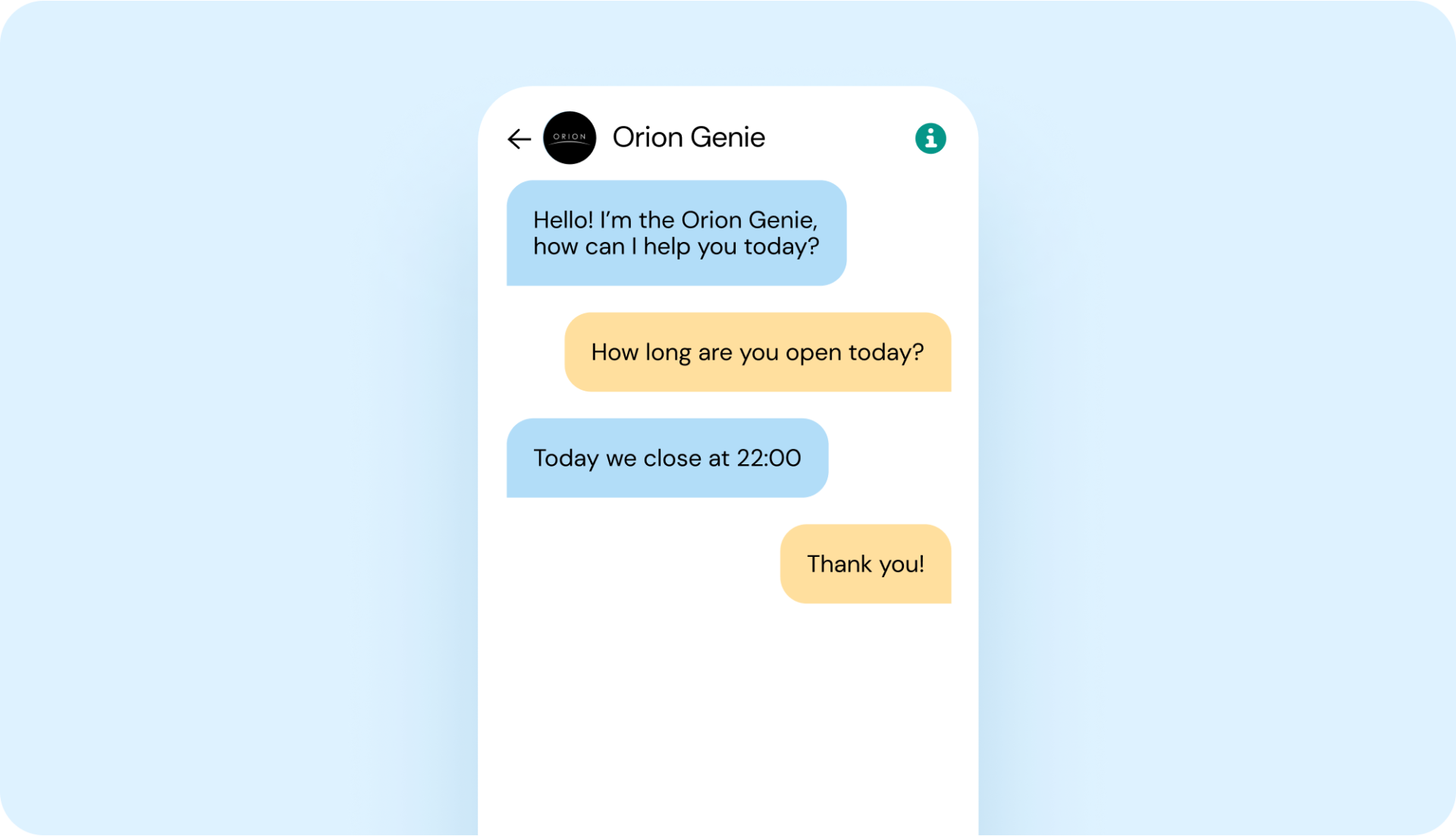
Orion Malls uses WhatsApp marketing to answer customer FAQs about opening and closing hours, food and entertainment options, promotional offers, and more.
Thanks to Orion Genie as a key part of their WhatsApp marketing strategy, the mall has over 3,500 monthly automated conversations and has experienced an uptick in foot traffic!
BMW: Decrease call volumes
High incoming call volume is a problem often faced by businesses that rely on a central call center to answer customer queries.
Before WhatsApp marketing, car manufacturer BMW’s call center was experiencing an influx of similar customer queries for updates on car repairs like, “is my car ready?” or “can you confirm when I should pick up my car?”
With so many agents answering the same questions, BMW was incurring substantial costs, and their service quality was being compromised.
BMW strategically integrated WhatsApp into its customer support strategy to address the overwhelming volume of customer calls, particularly those seeking updates on their car repairs.
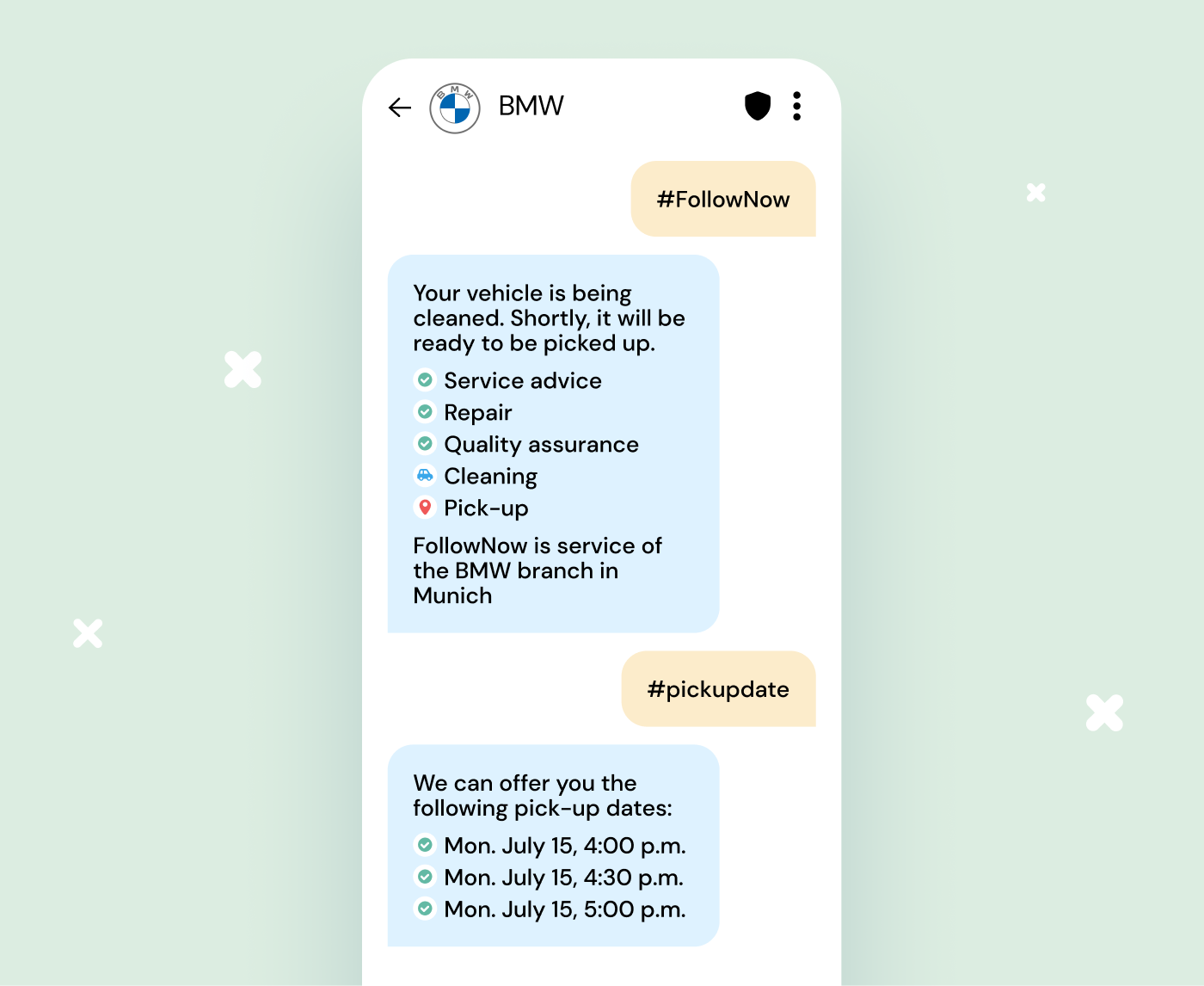
BMW uses WhatsApp to speed up customer service and answer customer inquiries in real time through automation.
And their use of WhatsApp has had great results: 80% of all queries are now successfully answered by the chatbot, and 90% of customers recommended interacting with it.
iFood: Automated support services
Businesses that rely on a staffed support center are subject to the challenge of maintaining high-quality customer service and ensuring timely, scalable issue resolution.
That’s the challenge that Brazilian food delivery platform iFood found before they turned to WhatsApp to fully automate customer support functions.
iFood’s new solution includes a chatbot on WhatsApp and their website that automates crucial processes like onboarding new drivers or restaurants. It also allows iFood to provide faster gift card conversions and measure NPS scores through end-customer, restaurant, and employee surveys.
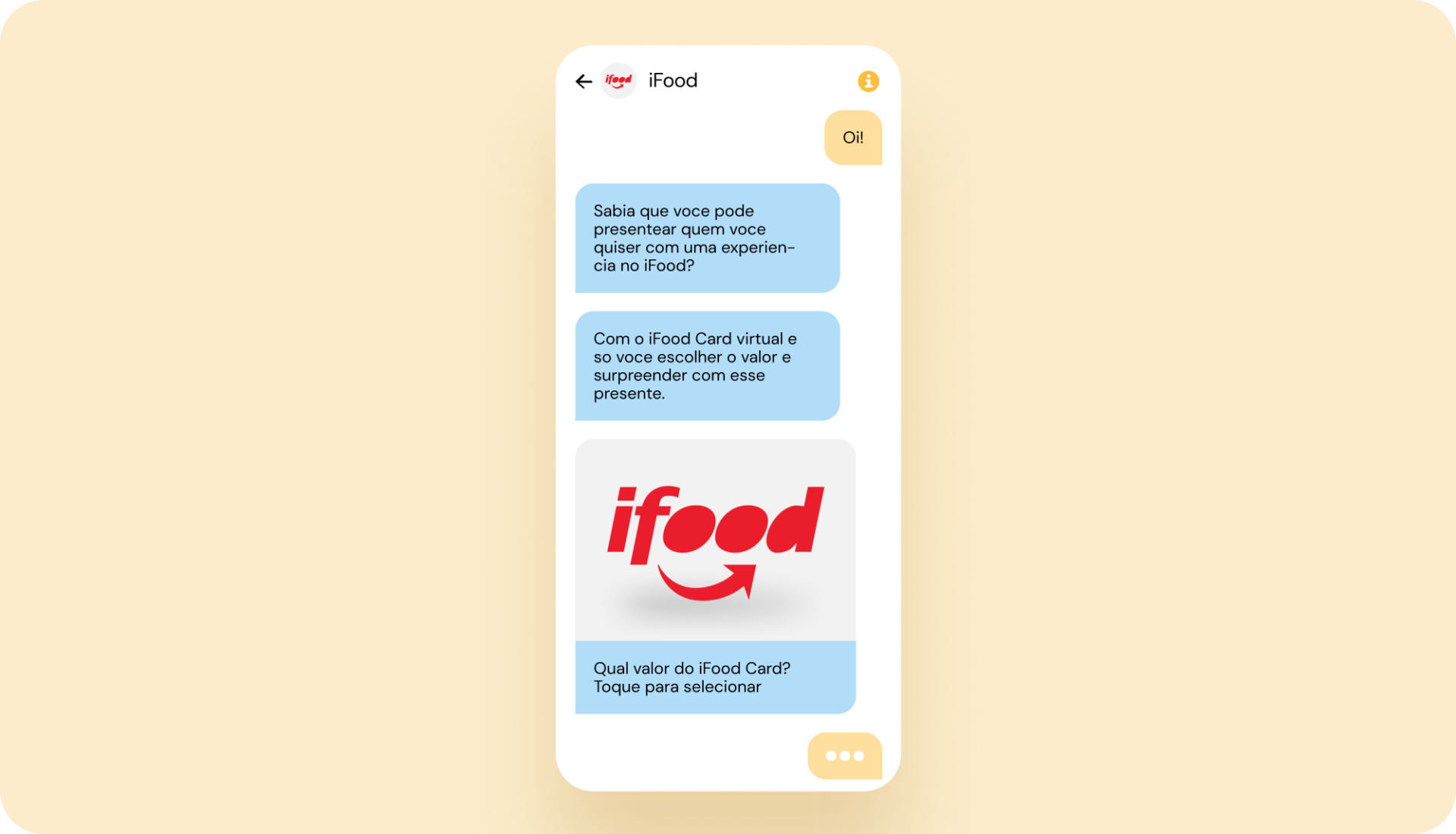
iFood’s chatbot addresses customer challenges and streamlines the onboarding process for new restaurants and delivery staff.
The results? An impressive 70% reduction in delivery costs and a 91% satisfaction score from chatbot-onboarded delivery staff.
Integrating WhatsApp into your omnichannel strategy for better customer experience
Now you’ve seen how to integrate WhatsApp into your marketing strategy, it’s crucial to not consider WhatsApp as a standalone marketing channel, but as an integral part of your omnichannel strategy – a seamless, customer-centric approach that integrates various conversational channels that customers use throughout their journey. In this approach, WhatsApp should complement other channels like email, social, or SMS for a more cohesive marketing strategy.
Here are a few ways to make that happen:
-
Cross-platform promotion. Promote your WhatsApp presence across other communication channels, from email, to push notifications, and other conversational messaging channels.
-
Tailor your outreach. Use WhatsApp for people who prefer it and use other channels for those with different preferences.
-
Ensure unified branding. Maintain consistent branding and messaging across channels so your customers have the best experiences.
-
Data integration. Use data from WhatsApp alongside data from other platforms (like your CRM, or other messaging channels) to create individual customer profiles and more personalized marketing.
-
Optimize and learn. Regularly assess performance metrics from WhatsApp and other channels to make your omnichannel strategy as effective as possible.
Learn more about using WhatsApp for marketing
The full potential of using WhatsApp for marketing entails more than just its vast user base and great engagement rates – it's about crafting a thoughtful strategy that aligns with your business goals, engages your target audience, and delivers an exceptional customer experience.
As you look to integrate WhatsApp into your omnichannel strategy, keep in mind that it can be a way to forge genuine connections. Sinch has offerings for those looking for enterprise solutions, and/or you can check out Sinch Engage if you’re looking for a more plug-and-play WhatsApp messaging platform.

If you’re ready to get started with WhatsApp Business API, our complete guide has everything you need to get started. Or contact us to learn more about creating a conversational messaging strategy that your customers will love!
